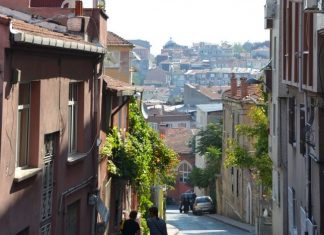The rulers of the Pechenegs and Magyars are the only independent rulers to be accorded the title archontes. In contrast, and also in accordance with the claims advanced in the DAI — where it is stated forcefully that the Croats and Serbs have never been subject to the ruler of the Bulgarians — the archontes of the Croats and the Serbs are considered dependent peoples of the empire, and are issued with imperial commands; so are the rulers of the Slavic regions of Zahumlje, Kanali, Travunija, Duklja and Moravia.
The term archon, which I have translated in the diplomatic stylesheet as Prince, is a title almost always reserved for semi-autonomous Christian rulers who have recognized the higher authority of the Byzantine emperor. (The exceptions are the rulers of the independent and pagan Pechenegs and Magyars.) As we will see below, the relationship usually involved ties of spiritual kinship, with the emperor regarding and styling himself as father, or grandfather. Exceptionally the emperor acknowledged the parity of a spiritual brother (pnematikos adelphos), for example the King (rex) of Francia. At this stage the title archon ceased to be appropriate: for a time the ruler of Bulgaria is addressed as a spiritual brother and an emperor (basileus).
The inclusion of Moravia suggests that the protocols for the empire’s northern neighbours, as they have been preserved, date from before the Magyars arrived in the Carpathian Basin in c. 895. Bury (1907: 223), suggests the Isaurian period (i.e. before 802), but the later ninth century seems more likely. Received opinion holds that Moravia fell to the Magyars before c. 906 (although if we believe recent attempts to relocate Moravia we might accept an earlier date).
Indrance to our understanding
However, the impossibility of identifying the date of the protocol precisely is not a hindrance to our understanding of the De Cerimoniis; rather it reveals to us the essence of the document, for although much of the information it contains is clearly antiquarian, and many of the ceremonies redundant, they are included to bolster the image of continuity and immutability that is central to the notion of taxis, and to impose a framework of idealized relations within the overarching hierarchy which has persisted from antiquity to the present. And in its accumulation of principles and precedents from the pool of Roman and Late Antique ideology, the De Cerimoniis was dynamic because it facilitated the invention of traditions suited to conditions in the mid-tenth century, and gave them solid pseudo-historical roots.
Read More about Compassionately embrace his victim








